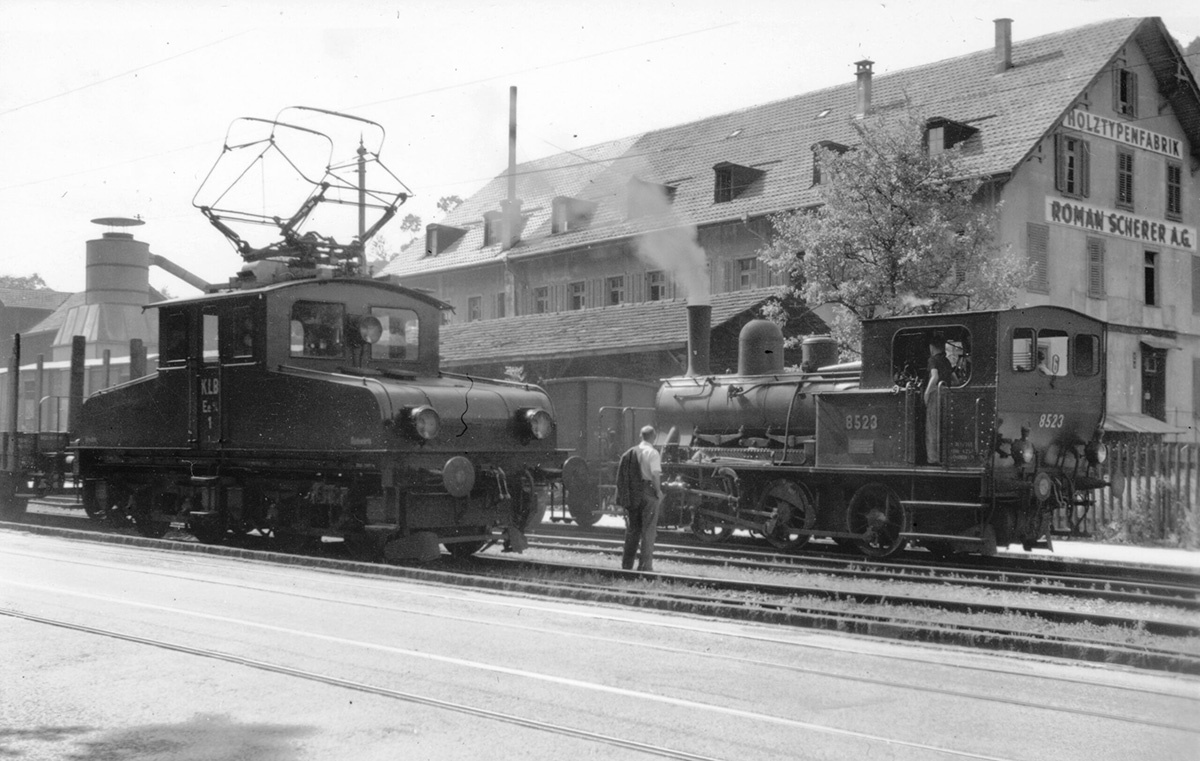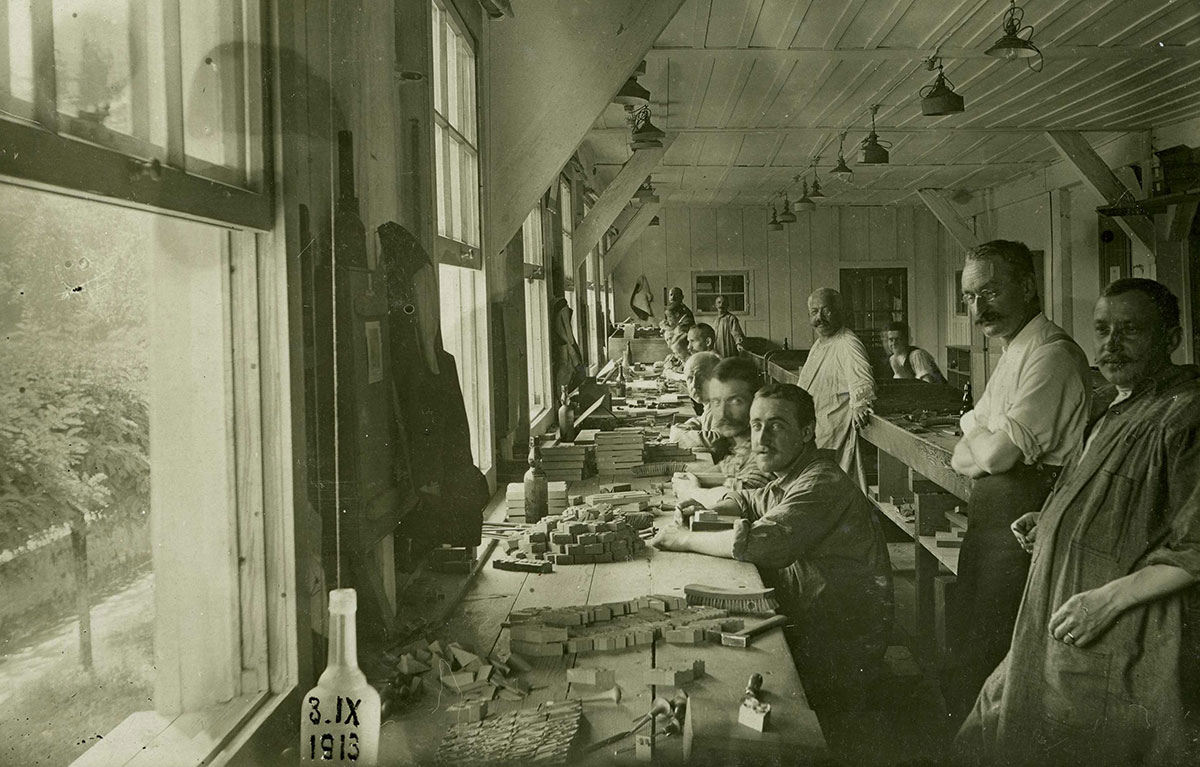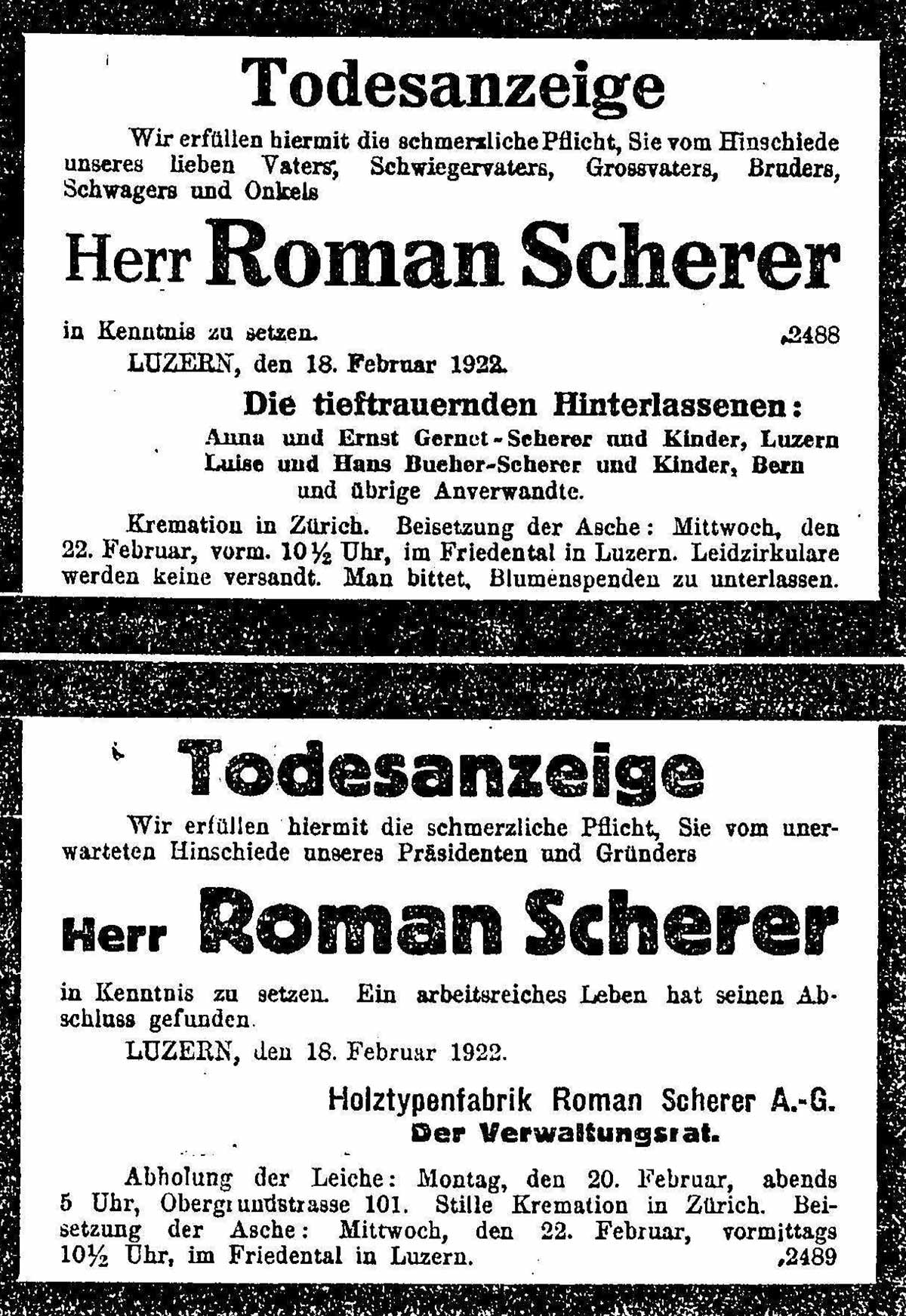World-famous typefaces from Kriens

Roman Scherer’s highly specialised factory in Kriens manufactured wood types for the whole world – including for Pravda, the official newspaper of Russia’s Communist party in Moscow.
Kriens is an industrial town close to Lucerne. Nestled between the Sonnenberg and Mount Pilatus, Kriens is intercepted by the Krienbach river, which brought trade and industry to the town early on. Roman Scherer moved there around 1890 as he needed more space for his business. The Kupferhammer district was the ideal location because it was a neighbourhood accustomed to the sound of hammers and saws and had direct rail connections

Roman Scherer was a farmer’s son from Meggen in the canton of Lucerne. He was born in 1848 and attended the cantonal school. But he wasn’t cut out for academic study. After leaving school, Scherer initially completed a commercial apprenticeship at the Stahlwerk von Moos steel works in Emmenbrücke. He then worked at banks in Ticino and France.

On his return to Lucerne, Scherer first worked at a bank, and at an early age took over the management of the Pays’schen Fabrik factory that produced wooden furniture and rifle stocks in Lucerne. In 1877, the 29-year-old set up his own business, acquiring the machines and equipment from a company that had gone bankrupt in the Valais. Scherer manufactured letters for letterpress printing using wood from local fruit trees, which were in abundant supply in the Lucerne region. The letters were used in printing processes for posters, headlines and titles.

On his return to Lucerne, Scherer first worked at a bank, and at an early age took over the management of the Pays’schen Fabrik factory that produced wooden furniture and rifle stocks in Lucerne. In 1877, the 29-year-old set up his own business, acquiring the machines and equipment from a company that had gone bankrupt in the Valais. Scherer manufactured letters for letterpress printing using wood from local fruit trees, which were in abundant supply in the Lucerne region. The letters were used in printing processes for posters, headlines and titles.

In order to sell to customers in Russia, Scherer produced special Cyrillic typefaces – with great success. For example, the design of the typeface used by the Russian daily, Pravda – the key publication of the Russian Communist party – harked back to a wood type made by Roman Scherer. His type series ‘Serie 5015’, known as ‘Reform’ formed the basis of the typeface for the flag on Pravda. So, in this way, the wood type factory in Kriens played a small part in Russia’s Communist movement, or Communist truth, as that is what the word ‘Pravda’ means. Having said that, Scherer had developed this typeface as early as 1905, while the Pravda newspaper only became one of the highest-circulation newspapers in the Communist world from 1912.

The pinnacle of the industrial career of Roman Scherer – known as the ‘king of type’ – was at the International Exhibition of the Book Trade and Graphic Design in Leipzig in 1914, where he was presented with the gold award. Scherer’s factory then expanded its range to include poster types made from cast aluminium. Eight years after receiving the award in Leipzig, Scherer died at the age of 74, but his company continued to exist until 1966.

Roman Scherer’s type books are still sought after by designers as the Kriens-based firm’s typographical design was very clean but also very fanciful. Basel-based historian Philipp Messner, who produced an excellent piece of research into Scherer’s work, tracked down Scherer’s type books at the Basler PapiermühleExternal link museum of paper and printing and at the Lucerne Central and University Library. Scherer’s typefaces have also found their way into the famous type design collection compiled and maintained by Luc Devroye at McGill University in Montreal. And in 1972, a reprint of Scherer’s art nouveau and art deco typefaces was published in the United States. His work is also documented in the Letterform Archive in San Francisco. So it’s probably safe to say that the typefaces from Kriens are now much more famous than their birthplace.

In compliance with the JTI standards
More: SWI swissinfo.ch certified by the Journalism Trust Initiative








You can find an overview of ongoing debates with our journalists here . Please join us!
If you want to start a conversation about a topic raised in this article or want to report factual errors, email us at english@swissinfo.ch.